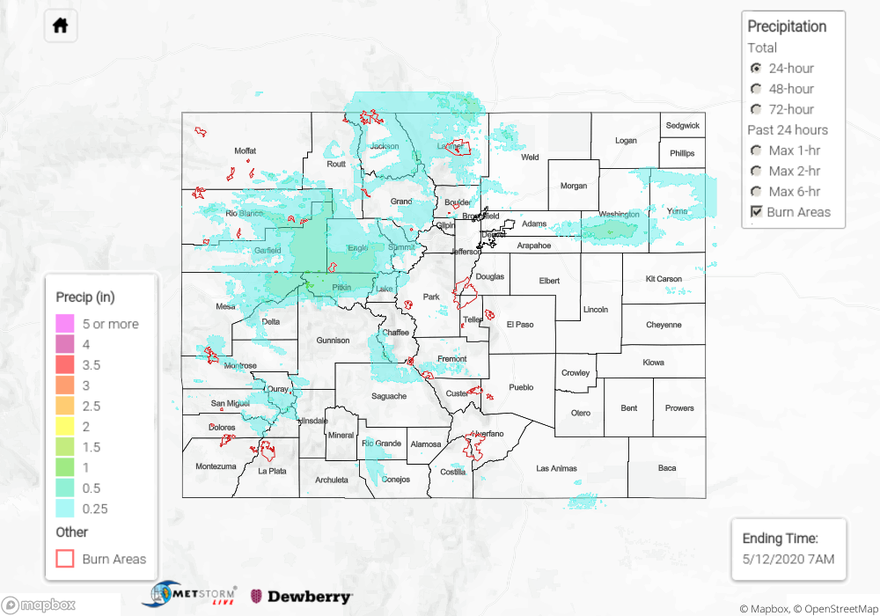Issue Date: Tuesday, May 12th, 2020
Issue Time: 9:20AM MDT
Summary:
Active weather day across the state that began with rainfall over western Colorado Sunday night into Monday morning. This system moved east throughout the morning and produced abundant cloud cover over the state. Behind the system, there was a bit of clearing, which allow for some thunderstorms to develop over western Colorado (increased instability). Hail was reported with these storms that varied in size from 0.25 inches to 1.25 inches. A stronger storm in eastern Mesa County and western Pitkin County helped produce 24-hour totals around 1 inch with the multiple rounds of showers. Thankfully, rainfall was gradual enough that it didn’t cause flooding issues over the Lake Christine burn area. Several reports from CoCoRaHS stations were over 1 inch, but the Roaring Fork gage at Glenwood Springs saw only about a 0.5 feet increase in gage height. Strong winds were also reported in the range of 46 to 63 mph. Leadville reported 1.5 inches of snow, which sits at 10,151 feet, so not too surprising. Rainfall was more stratiform over eastern Colorado with 24-hour totals up to 0.5 inches in southern Washington County. Unfortunately, the areas experiencing extreme drought received the least amount of precipitation.
For precipitation estimates in your area over the last 24-hours, scroll down to the State Precipitation Map below.
Click Here For Map Overview
